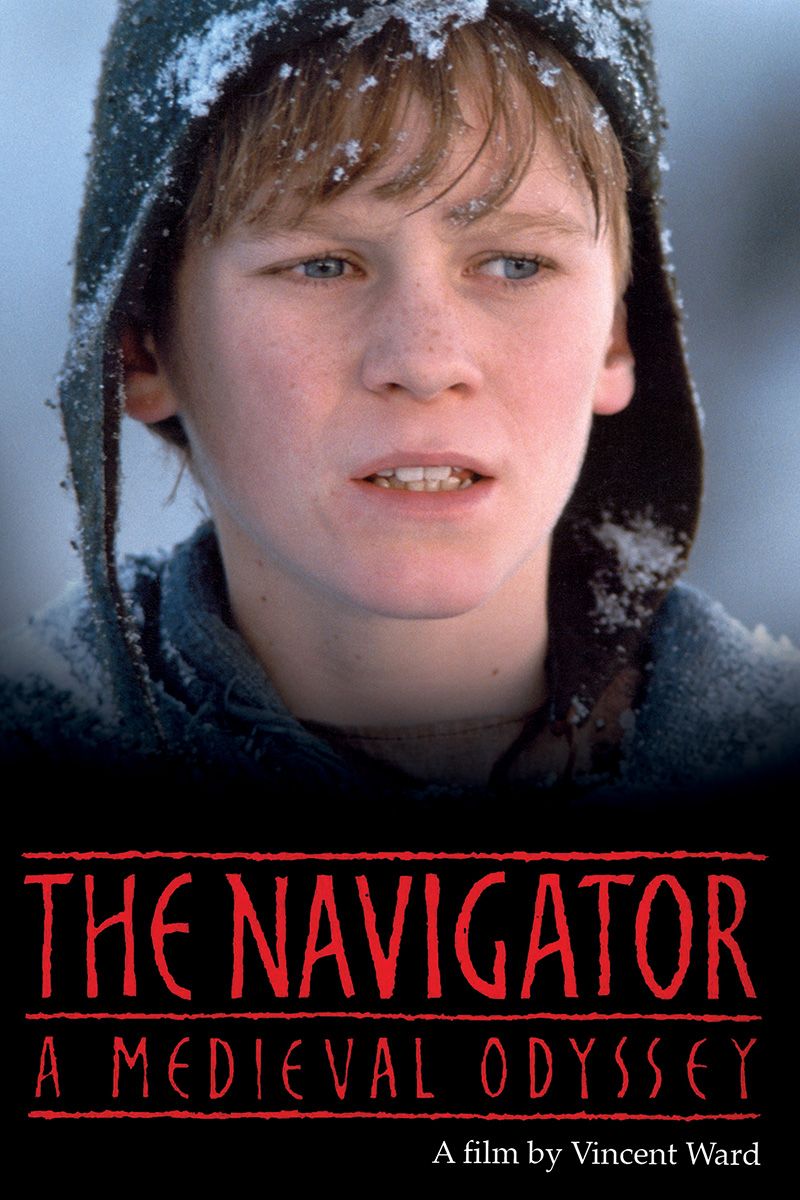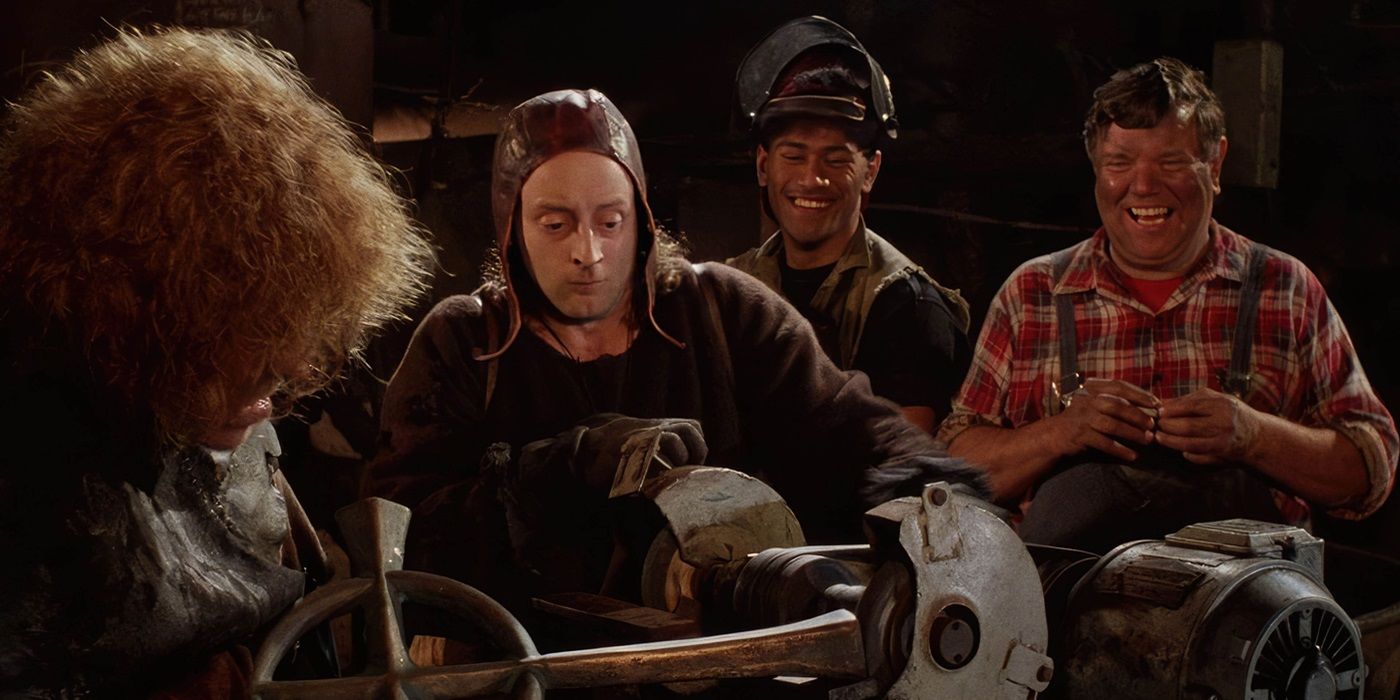Utilizing the immeasurable worry and desperation of the Bubonic Plague, Vincent Ward‘s The Navigator: A Medieval Odyssey delivers a special method to the age-old custom of time-bending in science-fiction and fantasy movies. Creatively bold and rife with non secular and societal undertones, The Navigator intricately makes use of visions and desires to warn its characters of an impending doom, toying with audiences’ expectations of what’s actual and what’s not. The result’s a smorgasbord of filmic photos that bends the conventions of time and area. The Navigator is arguably important viewing for these enthusiastic about time-travel and its immense potentialities.
What Is ‘The Navigator: A Medieval Odyssey’ About?
The Navigator: A Medieval Odyssey tells the story of a ragtag group of Cumbrian villagers in mid-14th century England, who’re desperately making an attempt to flee the onslaught of The Black Dying. With nowhere to show to, the villagers depend on the visions of Griffin (Hamish McFarlane), a boy who is presented with a “second sight”. In accordance with the pictures in his head, they’re to bear a mission to place a copper cross atop a cathedral on the far facet of the world. With the blessing of a returning Connor (Bruce Lyons), one of many village leaders, they embark on a journey in direction of a deep cavern. With immense braveness and a few high-quality copper ore of their packs, they efficiently blow via the rocks and find yourself in modern-day New Zealand. It seems that the cave that they’ve gone via is just not merely a technique to a far distant land, however a portal that distorts the material of the space-time continuum.
Connor’s and Griffin’s teams are break up up by circumstances ensuing from their awe and confusion of this unusual world. Griffin and his companions stroll their approach right into a foreclosed foundry, the place they persuade the employees to forged their copper ore right into a cross, whereas Connor finally ends up lacking, chasing a runaway member of his. After a collection of comical mishaps due to their failure to grasp the applied sciences of the current world, they ultimately converge on the cathedral, and Griffin efficiently locations the cross atop the church tower. Nevertheless, the story manages to pack in a twist ending; it was all Griffin’s imaginative and prescient, they usually had been nonetheless in the course of the tunnel struggling to push via. When somebody from the opposite finish publicizes that the plague has managed to keep away from them, they return up, solely to find that Griffin has been contaminated.
‘The Navigator: A Medieval Odyssey’ and Its Strategy to Time Journey
Time journey is a staple within the science-fiction style, particularly as a result of it opens new dimensions for storytelling, crafting narratives that would not be attainable within the “pure” approach we understand them. Fraser Sherman in Now and Then We Time Travel: Visiting Pasts and Futures in Film and Television notes that there are specific conventions relating to its utilization in fiction. Usually, movies on time journey traverse the space-time continuum in a simple vogue. Characters go back in time and try to fix things as a last ditch effort to avert a great crisis. They might be hinged on the notions of causality (altering or sustaining outcomes à la Back to the Future), logic (contradictions and paradoxes, very similar to in Men in Black 3), and/or morality (bending historical past for the better good, equivalent to in Terminator 2: Judgment Day).
What makes The Navigator: A Medieval Odyssey stand out from these conventions is that it manages to mix all three of those concepts, whereas additionally injecting one thing new: the time journey does not want happen within the bodily realm. Relatively, it manifests via the imaginative and prescient of its most important character, stylistically separated by its artistic use of shade. The current time – or within the case of the movie, the medieval time – is in black and white, whereas the visions which discuss with the long run are in full dwelling shade. That is extra than simply an aesthetic selection, as crucial sequence of the image – the second the place the viewers realizes it’s all a imaginative and prescient – is a placing show. As Griffin has managed to achieve the highest of the tower, signaling the success of their mission, the pictures revert to monochromatic black and white, with all of them sitting geese in the course of the cave.
This quick return to the absence of shade is gut-wrenching to its spectators, evocative of its merciless intentions. It is a reflexive recursion of huge proportions, which may be interpretive of Ward’s message that every one of that is simply, as time-travel is in actual life, merely a fantasy. They might have traveled via area and time, however the reality of the matter is that The Black Dying is coming, and there is no approach of stopping it. It has efficiently subverted the viewers’ expectations and style tropes by utterly disregarding something about the potential of time journey. In a approach, the movie makes use of time-travel to disclaim the existence of such. Apparently, the one factor that got here true of Griffin’s visions is that he’s the one who would die. In spite of everything, within the movie’s denouement, he noticed himself falling from the tall ivory tower hammering residence the futility of this fantastical endeavor.
The Social and Non secular Undertones of ‘The Navigator: A Medieval Odyssey’
One of many extra intricate issues about The Navigator: A Medieval Odyssey is about its social and spiritual questioning of the medieval ages. Ward himself notes that the concept of the movie got here from a dialog he overheard on journey to Ecuador. In accordance with the filmmaker himself, a person was describing a dream he had the place a metropolis was made up of iron and glass, glimmered and shined throughout the cosmos. Ward then imagined if an impoverished younger man had been to expertise this imaginative and prescient, would he have had the identical ideas? This manifests into the very nature of the characters themselves. The Cumbrian villagers are impoverished, desperately making an attempt to flee one thing that might wipe out their complete populace. At a time like this, they’ll solely depend on their religion to grant them salvation. The journey they embark on is paying homage to a pilgrimage, a protracted arduous journey to the holy land that has their solutions – the ultimate vacation spot being a cathedral, an on-the-nose reminder of such. The mixing of those two components brings viewers proper into their horrible predicament. One can rapidly think about the worry and paranoia enveloping these within the medieval ages within the face of such a virus, and the desperation for salvation.

Associated
Francis Ford Coppola’s History of Very Good (and Very Bad) Time Travel and Fantasy Movies
The ‘Megalopolis’ and ‘Godfather’ director transcends area and time.
‘The Navigator: A Medieval Odyssey’ Mirrors Medieval Concern Via Fashionable Eyes
Surely, The Navigator: A Medieval Odyssey transforms trendy life into an amazing fever dream for its medieval vacationers. From considering a prepare is a fire-breathing beast or that skyscrapers are divine temples, the movie permits viewers to see the world via these vacationers’ terrified, awe-struck eyes. In that sense, it doesn’t merely merge the 14th and twentieth centuries, it smashes them collectively and creates a surreal cocktail of worry, religion, and futurism. There’s a selected second when the villagers stumble onto a busy freeway. Ulf clutches a picket Virgin Mary statue whereas gazing at headlights and referring to them as “so fairly, so fairly.” Whereas there’s some humor to be discovered there, it’s unsettling on some stage since what’s usually mundane is apocalyptic to them.
Maybe the place the movie shines extra is in the way it makes use of this fish-out-of-water dynamic to vary our perspective on modernity. Its grainy black-and-white visuals for medieval England and vibrant shade for Nineteen Eighties New Zealand actually promote a way of otherworldliness. It reminds viewers {that a} contemporary pair of eyes can rework the strange into one thing magical, terrifying, and profoundly alien. Right here, the director creates a kind of mirror that doesn’t simply replicate our world however theirs, too. He prompts viewers to surprise in the event that they’re actually as far faraway from medieval fears and religion as we prefer to assume.
How ‘The Navigator: A Medieval Odyssey’ Stands Aside From Basic Time Journey Movies
Whereas there’s no set components for the trendy sci-fi film, a majority of them have a tendency to maneuver alongside the identical strains. There’s often flashy tech, a “Great Scott!” second, and a mission to avoid wasting the day earlier than the timeline results in shambles. The Navigator: A Medieval Odyssey goes an entire different route and leans extra into exploring religion, worry, and the way time itself can really feel like a international land. Take the second the villagers first emerge from their subterranean tunnel into Nineteen Eighties New Zealand. In some books, it could qualify as lackluster since there was no time machine or dramatic sci-fi effects. As an alternative, we get an easy shift from monochrome to paint. Nevertheless, it’s removed from underwhelming seeing because it’s that subtlety that makes it each poetic and oddly unsettling. The group’s reactions make the trendy world really feel as alien to them as Mars would to us.
The nice factor right here is that The Navigator: A Medieval Odyssey refuses to solely hone in on time journey. In truth, the idea of time journey is extra of a automobile to take a more in-depth have a look at timeless human themes like survival, sacrifice, and perception. So, in contrast to Back to the Future or The Time Machine, the narrative isn’t about tweaking the previous or saving the future. It’s about how the previous collides with the current and the way little humanity has modified. By making modernity virtually mystical, Ward transforms the time journey style altogether. In essence, Vincent Ward’s time-bending function is a cinematic achievement that bends the concept of time-traveling to a totally totally different stage. Whereas it will not be as thrilling as different sci-fi or fantasy tales – The Navigator: A Medieval Odyssey possesses a molasses-like tempo at instances – it efficiently bridges the improbable world of science-fiction and the harrowing indifference of actuality.
The Navigator: A Medieval Odyssey is presently out there to stream on Arrow Participant within the U.S.

The Navigator: A Medieval Odyssey
Males looking for reduction from the Black Dying, guided by a boy’s imaginative and prescient, dig a tunnel from 14th century England to twentieth century New Zealand.
- Actors
-
Bruce Lyons Chris Haywood, Marshall Napier, Hamish McFarlane, Paul Livingston, Jay Laga’aia, Noal Appleby, Sarah Peirse
- Launch Date
-
March 3, 1989
- Run Time
-
93 minutes
- Director
-
Vincent Ward
- Studio
-
Dwelling Cinema Group


